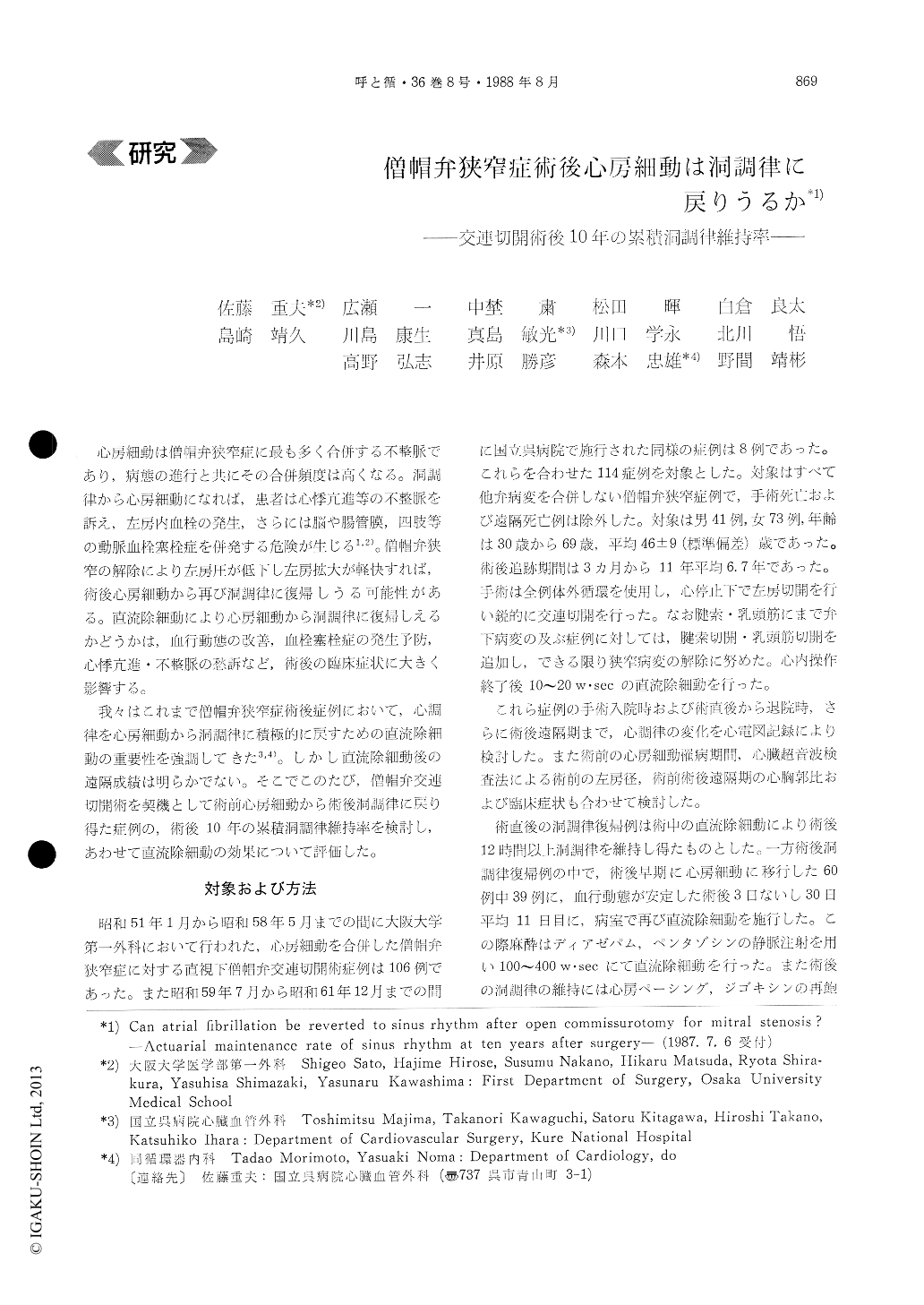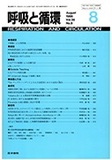Japanese
English
- 有料閲覧
- Abstract 文献概要
- 1ページ目 Look Inside
心房細動は僧帽弁狭窄症に最も多く合併する不整脈であり,病態の進行と共にその合併頻度は高くなる。洞調律から心房細動になれば,患者は心悸亢進等の不整脈を訴え,左房内血栓の発生,さらには脳や腸管膜,四肢等の動脈血栓塞栓症を併発する危険が生じる1,2)。僧帽弁狭窄の解除により左房圧が低下し左房拡大が軽快すれば,術後心房細動から再び洞調律に復帰しうる可能性がある。直流除細動により心房細動から洞調律に復帰しえるかどうかは,血行動態の改善,血栓塞栓症の発生予防,心悸亢進・不整脈の愁訴など,術後の臨床症状に大きく影響する。
我々はこれまで僧帽弁狭窄症術後症例において,心調律を心房細動から洞調律に積極的に戻すための直流除細動の重要性を強調してきた3,4)。しかし直流除細動後の遠隔成績は明らかでない。そこでこのたび,僧帽弁交連切開術を契機として術前心房細動から術後洞調律に戻り得た症例の,術後10年の累積洞調律維持率を検討し,あわせて直流除細動の効果について評価した。
We studied how many patients with atrial fibril-lation could be reverted to sinus rhyhtm by DC cardioversion after open commissurotomy for mitral stenosis. After primary or secondary DC cardio-version, 44(39%) out of 114 patients reverted to sinus rhythm and maintained it until discharge from hospital. The actuarial maintenance rate of sinus rhyhtm was 58±9% 10 years after surgery in these 44 patients. Functional Status (NYHA classification) in the 28 patients, who reverted to sinus rhythm and maintained it in the late period 4.9 years (average) after surgery, was more excellent than 85 patients who retained atrial fibrillation in the late period after surgery. Cardiothoracic ratio in the former 28 patients was significantly lower than that in the latter 86 patients.
Therefore it was considered to be very important that sinus rhythm was restored by DC cardiover-sion and every effort was made to maintain sinus rhythm to the late period after surgery in the patients presenting with atrial fibrillation preope-ratively.

Copyright © 1988, Igaku-Shoin Ltd. All rights reserved.


